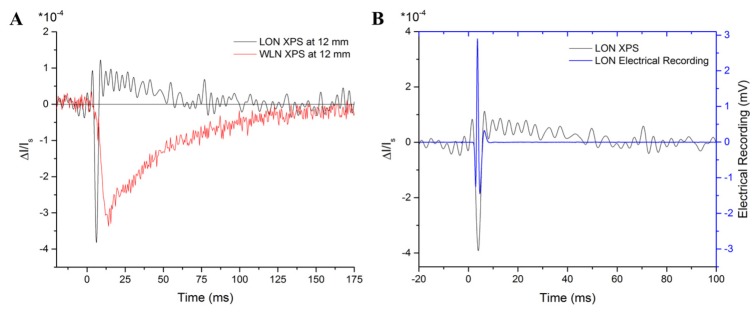Fig. 3.

A) Horseshoe crab lateral optic nerve (LON) XPS measured at a distance ~12 mm from the stimulus site, overlaid with the lobster WLN XPS at the same location. The signal spreads with propagation distance for the heterogeneous WLN, but the same is not true for the homogeneous LON. The gradual recovery phase happens from above baseline for the LON and below baseline for the WLN. B) The corresponding electrical recording for the LON is time-adjusted and plotted over the peak of the XPS from Fig. 3(A) to show that this narrow optical peak can be explained by the concurrent arrivals of APs. The filter was set to remove frequencies below 300 Hz, allowing only for the detection of APs. As for the WLN, the gradual recovery of the XPS for the LON cannot be explained by the presence of APs.
